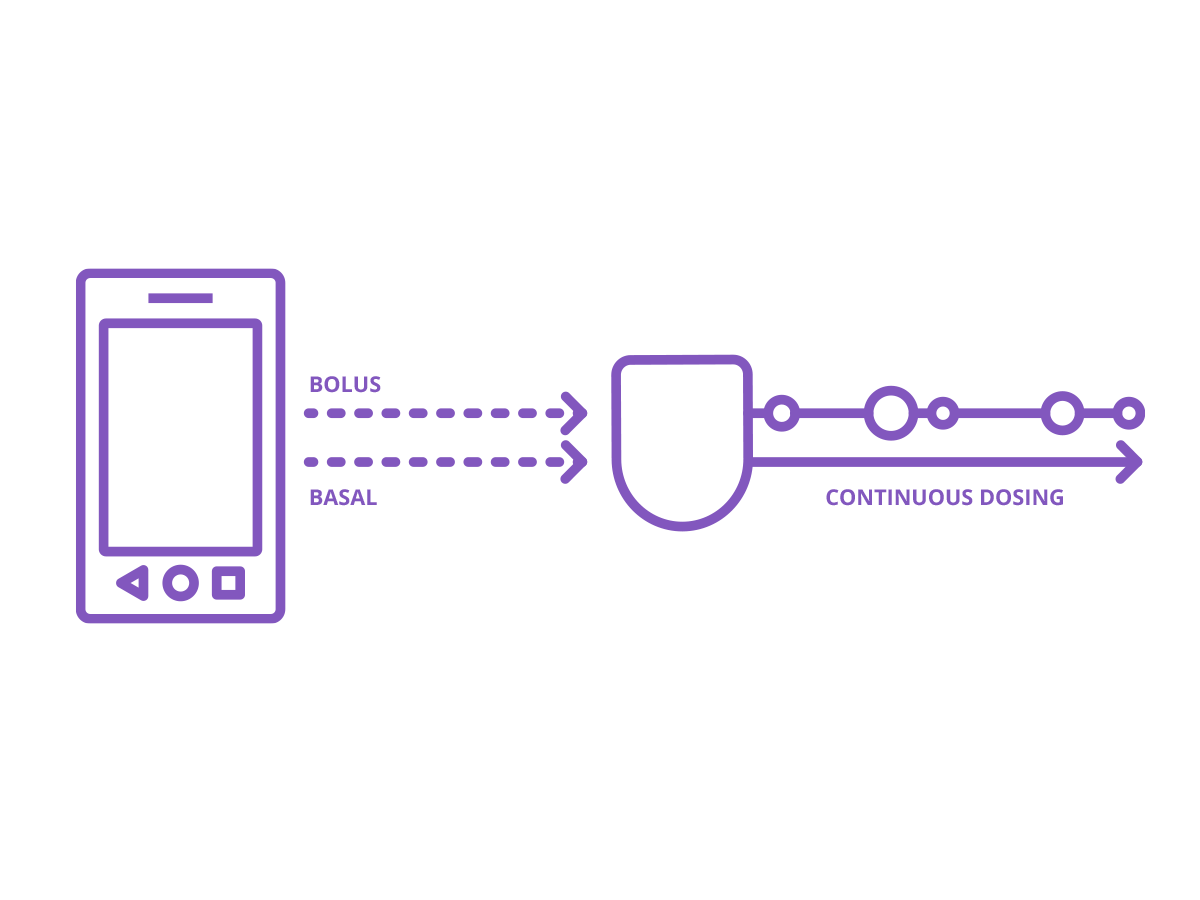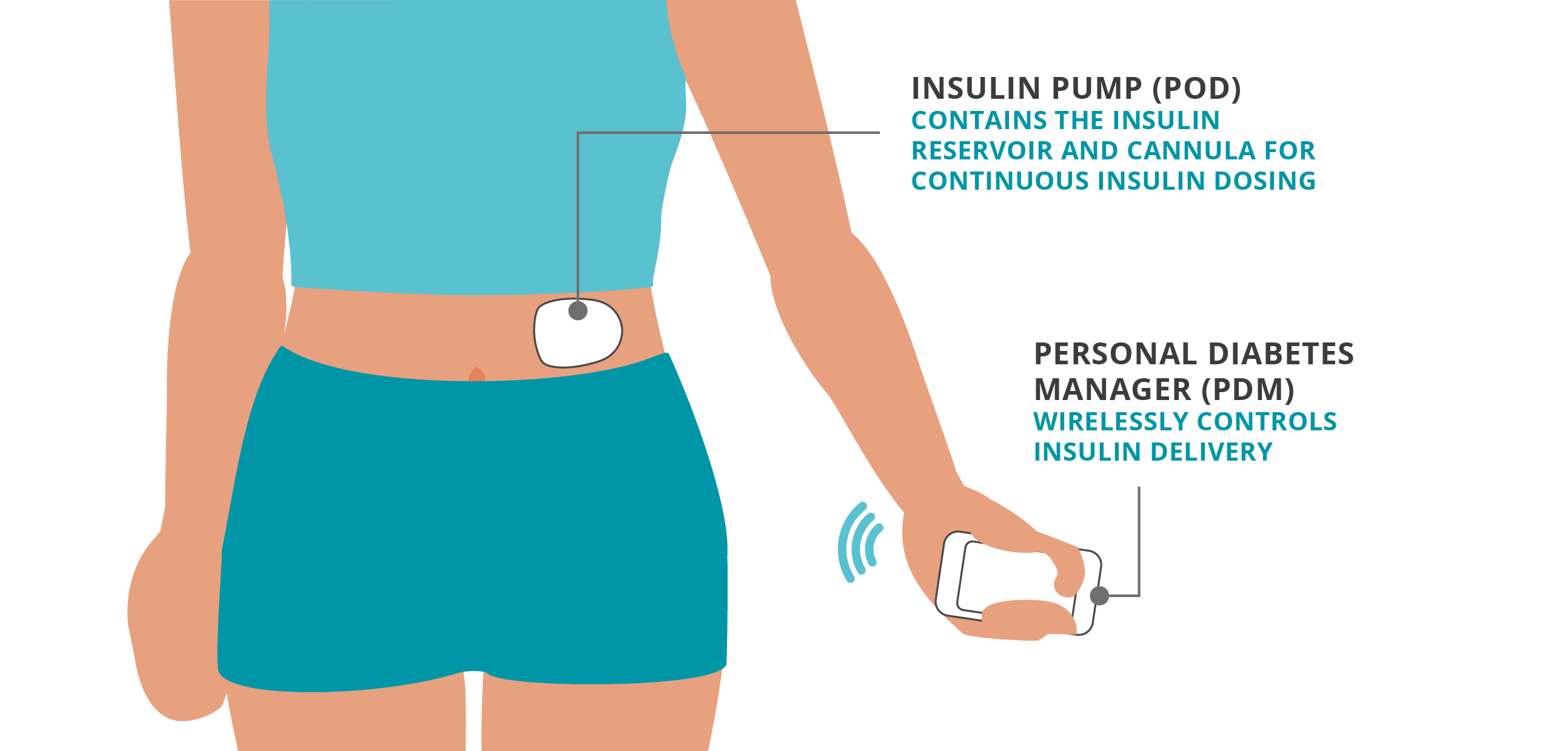Insulin Pumps, Explained
Are you thinking about using an insulin pump to manage your diabetes?
There’s a lot to consider, and terms like ‘patch pump’ and ‘closed-loop’ might be new to you. Let’s find out what an insulin pump is, and how insulin pump therapy works!
What’s an insulin pump?
An insulin pump is a small, wearable gadget that can deliver insulin continuously throughout the day and night, often in very small doses. Insulin pumps can help to manage blood glucose levels.1
Insulin pumps are an alternative to multiple daily injections (MDI) for people with diabetes.
They are becoming an increasingly popular choice for people with type 1 diabetes, but that doesn’t mean that they suit everyone.
Although insulin pumps eliminate the need for MDI, the recommendation is to still carry a back-up pen or syringe and insulin vial, in case of emergencies.
Different types of insulin pump
There is more than one type of insulin pump.


Tethered pumps
A tethered pump is sometimes called a tubed pump. It has a thin tube that connects the pump itself - which contains the insulin - to the body via an infusion set with a cannula. Insulin is delivered through the tube, and the pump can be kept in your pocket, or clipped to a belt or bra.


Patch pumps
A patch pump is sometimes called a tubeless or wireless pump. The part that contains the insulin sticks directly to the skin with adhesive, so there is no connecting tube.
You can wear a patch pump almost anywhere that you would administer an insulin injection. Insulin dosing is remotely programmed from a separate device, a bit like a remote control.
How does an insulin pump work?
A continuous amount of insulin is delivered 24 hours a day through a cannula placed under the skin. This is known as a basal dose, but it’s sometimes called background insulin.
Additional insulin is delivered for meals and blood glucose corrections - these are known as bolus doses.2
Traditional pumps


Tubeless pumps


Insulin pumps can help you calculate your bolus doses. These will be based on a combination of your personal settings, glucose readings and the carbohydrate values for any food you’re eating.
You only need one type of insulin with an insulin pump, commonly known as fast-acting insulin. This is used for both your basal and bolus doses.
If the terminology sounds confusing, don’t worry. If you or your child starts on an insulin pump, you should receive extensive training.
Understanding basal rates
Bolus insulin doses
Insulin pumps and glucose sensors
Insulin pump technology is moving - fast! This progress is positive for people with diabetes.
Some insulin pumps can integrate with certain glucose sensors, also known as continuous glucose monitors (CGMs) to continuously adapt and automatically deliver basal insulin according to your personal needs.
This is what’s known as an Automated Insulin Delivery system (AID), which you may know as a Hybrid Closed-Loop system (HCL).
Frequently Asked Questions about Insulin Pumps
Who qualifies for an insulin pump?
Are insulin pumps painful?
Can I shower with an insulin pump?
Do you sleep with an insulin pump?
Do I still need both types of insulin?
How much does it cost?
Continue reading:
Related Articles
Other topics
References and Disclaimers
The information and other content provided in this article, or in any linked materials, are not intended and should not be construed as medical advice, nor is the information a substitute for professional medical expertise or treatment. If you or any other person has a medical question or concern, you should consult with your healthcare provider. Never disregard professional medical advice or delay in seeking it because of something that have read on this blog or in any linked materials. If you think you may have a medical emergency, call your doctor or emergency services immediately. The opinions and views expressed on this blog and website have no relation to those of any academic, hospital, health practice or other institution.
1. Ravi Retnakaran, Jackie Hochman, J. Hans DeVries, Helene Hanaire-Broutin, Robert J. Heine, Vincent Melki, Bernard Zinman; Continuous Subcutaneous Insulin Infusion Versus Multiple Daily Injections: The impact of baseline A1c. Diabetes Care 1 November 2004; 27 (11): 2590–2596. https://doi.org/10.2337/diacare.27.11.2590
2. Walsh J, Roberts R. Pumping Insulin. 6th ed. San Diego, CA: Torrey Pines Press; 2017.
3. JDRF. (2023, August 22). Insulin pumps. jdrf.org.uk/information-support/treatments-technologies/insulin-pumps. Retrieved March 13, 2024, from https://jdrf.org.uk/information-support/treatments-technologies/insulin-pumps/#:~:text=What%20is%20an%20insulin%20pump,down%20high%20blood%20glucose%20levels.
4. Jill Weissberg-Benchell, Jeanne Antisdel-Lomaglio, Roopa Seshadri; Insulin Pump Therapy: A meta-analysis. Diabetes Care 1 April 2003; 26 (4): 1079–1087. https://doi.org/10.2337/diacare.26.4.1079




